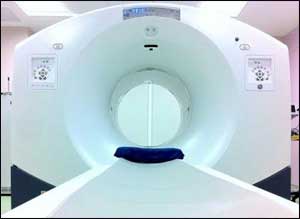- Home
- Editorial
- News
- Practice Guidelines
- Anesthesiology Guidelines
- Cancer Guidelines
- Cardiac Sciences Guidelines
- Critical Care Guidelines
- Dentistry Guidelines
- Dermatology Guidelines
- Diabetes and Endo Guidelines
- Diagnostics Guidelines
- ENT Guidelines
- Featured Practice Guidelines
- Gastroenterology Guidelines
- Geriatrics Guidelines
- Medicine Guidelines
- Nephrology Guidelines
- Neurosciences Guidelines
- Obs and Gynae Guidelines
- Ophthalmology Guidelines
- Orthopaedics Guidelines
- Paediatrics Guidelines
- Psychiatry Guidelines
- Pulmonology Guidelines
- Radiology Guidelines
- Surgery Guidelines
- Urology Guidelines
PET Imaging more effective than SPECT Scans in detecting severe CAD

PET and SPECT scans are nuclear imaging techniques that provide metabolic and functional information of the heart. PET scans provide better image resolution and quality but have not received widespread adaptation compared to SPECT. Researchers at the Intermountain Medical Center Heart Institute in Salt Lake City conducted largest of its kind involving PET patients and found that patients who receive cardiac positron emission testing (PET) imaging instead of single photon emission computed tomography (SPECT) scan experienced a significant increase in the detection of severe obstructive coronary artery disease.Results of the study have been presented at the American College of Cardiology Scientific Session in Orlando.
Researchers looked at pharmacologic SPECT so the comparison with PET scans was more accurate. Both scans involve injecting a small dose of the radioactive chemical, called a radiotracer, into the vein of the arm. The tracer travels through the body and is absorbed by the organs doctors examine.
Key findings of the study:
- Using PET scans instead of SPECT scans resulted in increased rates of diagnosis of severe obstructive coronary artery disease from 70 percent to 79 percent.
- PET scans were associated with a lower incidence of invasive catheterization without identification of severe coronary artery disease (43% vs 55%).
- Overall, PET more successfully identified patients with severe obstructive CAD and need for revascularization; compared to SPECT, PET scans increased true positives and reduced false positives for severe coronary artery disease.
For the study, researchers examined Intermountain Healthcare’s Enterprise Data Warehouse, which is one of the nation’s largest depositories of clinical data, and identified 3,394 patients who underwent a pharmacologic SPECT from 2011-2012 and 7,478 patients who underwent PET in 2014-2015 at Intermountain Medical Center. The average age of the patients was 65 years, and 47 percent of patients were female.
“The benefit of the study is that it helps us better identify a patient’s risk for adverse events affecting the heart and their need for further care,” said David Min, MD, a cardiologist specializing in cardiac imaging at the Intermountain Medical Center Heart Institute, and lead author of the study.
ET. More than 13,000 cardiologists and cardiovascular clinicians from throughout the world are attending the four-day meeting.
“Since Intermountain Medical Center made the switch from SPECT to PET in 2013, we thought it would be valuable to look at the differences in clinical outcomes since then,” said Kirk Knowlton, MD, director of cardiovascular research at the Intermountain Medical Center Heart Institute. “In order to understand the differences between the two-year period of SPECT utilization immediately before the PET program began and the two years after PET was fully implemented, we conducted a retrospective analysis of catheterization outcomes 60 days after heart patients received various treatments.”
“This study involves one of the largest number of PET patients studied to date,” Dr. Min added. “What we now know is that PET more successfully identifies the patient who have high-grade coronary artery disease and may benefit from revascularization. Similarly, PET better-identified patients who did not need an invasive procedure. This has broad implications as physicians consider what test best serves their individual patients and institutions consider the advantages and disadvantages of SPECT and PET as well as downstream resource utilization.’”
Other researchers in the study included: Steve Mason, PA-C; Stacey Knight, PhD, MStat; Jon-David Ethington, PA-C; Viet Le, MPAS, PA-C; Kent Meredith, MD; Ritesh Dhar, MD; Jeffrey L. Anderson; MD, Brent Muhlestein, MD; and Donald L. Lappé, MD.
The Intermountain Medical Center Heart Institute, part of the Intermountain Healthcare system based in Salt Lake City, is one of the premier cardiovascular centers in the country.

Disclaimer: This site is primarily intended for healthcare professionals. Any content/information on this website does not replace the advice of medical and/or health professionals and should not be construed as medical/diagnostic advice/endorsement or prescription. Use of this site is subject to our terms of use, privacy policy, advertisement policy. © 2020 Minerva Medical Treatment Pvt Ltd